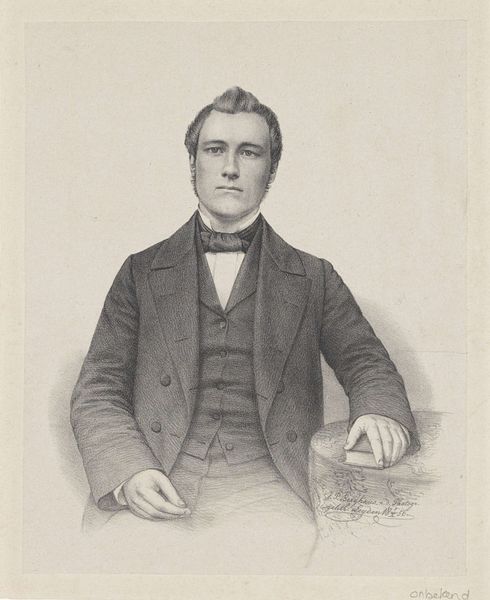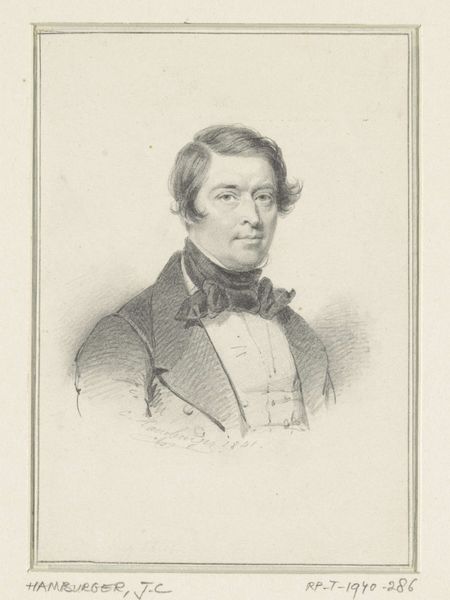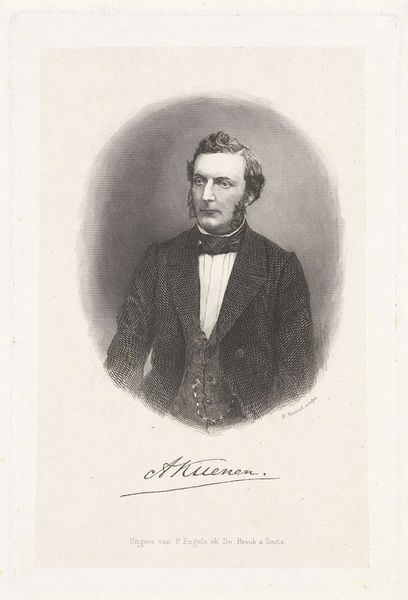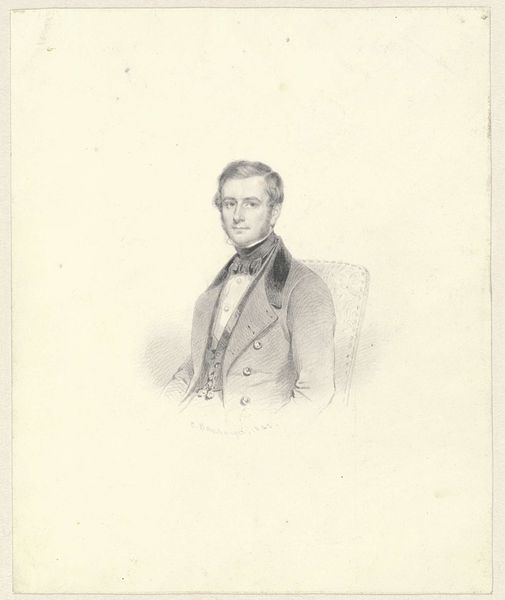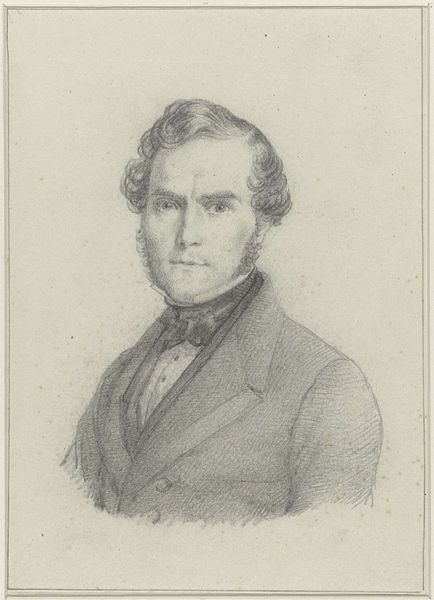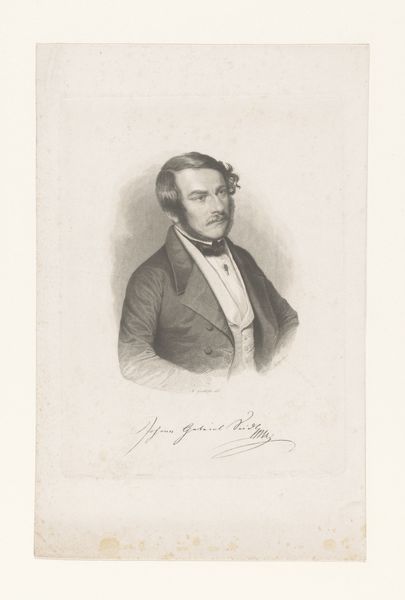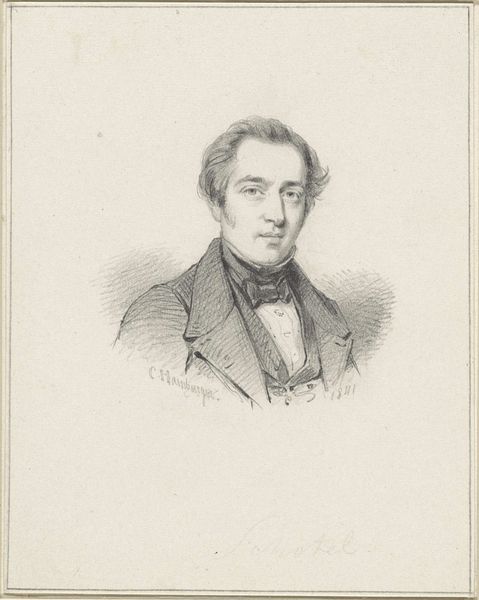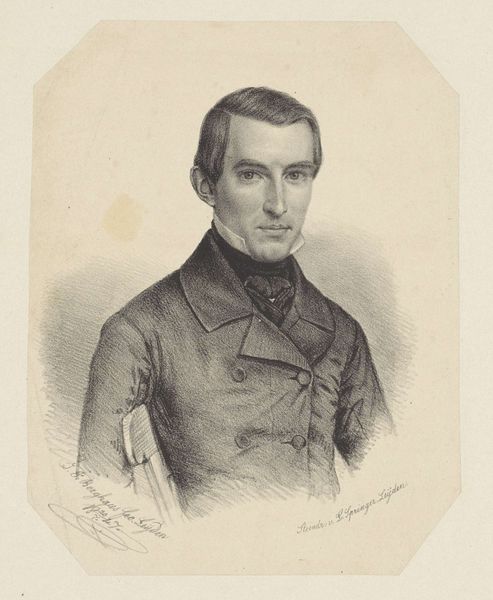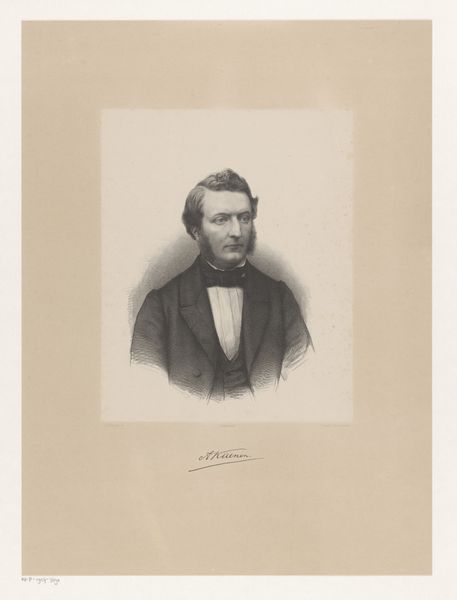
Dimensions: height 280 mm, width 210 mm
Copyright: Rijks Museum: Open Domain
Editor: So, here we have Adrianus Johannes Ehnle's "Portret van Samuel Johannes van den Bergh" from 1852, rendered meticulously in pencil. It’s quite striking how formal it feels, and the detail he captured is amazing. What stands out to you in terms of its historical or social context? Curator: Well, beyond its artistic merit, consider the *function* of portraiture during the mid-19th century. Photography was still developing, so a pencil drawing like this one offered a relatively accessible way for the middle class to participate in image making. How do you think this impacted social perceptions of self and status? Editor: That’s a great point. Perhaps it was about democratization of portraiture, allowing more people to visualize themselves within the social fabric? Was there a particular visual language emerging through these commissioned portraits? Curator: Precisely! The rising middle class was eager to emulate the visual rhetoric of power, previously accessible to aristocracy alone. Ehnle adopts conventions of Romantic portraiture but also subtly adapts it for a new patron, signified through sober dress and focused gaze, thereby reinforcing social roles and acceptable expressions of status within that emerging bourgeois identity. It really shows us that even a seemingly straightforward portrait plays a role in the broader spectacle of social mobility and the codification of class distinctions. What is your takeaway? Editor: I now see how a portrait such as this is so much more than just someone's likeness. It reflects societal aspirations, shifting power dynamics, and evolving visual communication! Curator: Agreed! This deepens our appreciation beyond its immediate aesthetic appeal.
Comments
No comments
Be the first to comment and join the conversation on the ultimate creative platform.
